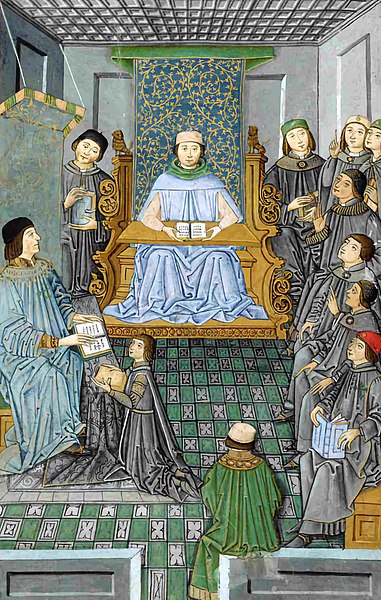Antonio de Nebrija was the most influential Spanish humanist of his era. He wrote poetry, commented on literary works, and encouraged the study of classical languages and literature, but his most important contributions were in the fields of grammar and lexicography. Nebrija was the author of the Spanish Grammar and the first dictionary of the Spanish language (1495). His grammar is the first published grammar study of any modern European language. His chief works were published and republished many times during and after his life and his scholarship had a great influence for more than a century, both in Spain and in the expanding Spanish Empire.
Antonio de Nebrija
Antonio de Nebrija teaching. Introducciones Latinae in the presence of D. Juan de Zuniga, 1486
Statue outside the Biblioteca Nacional de España, Madrid
In linguistics, a grammar is the set of rules for how a natural language is structured, as demonstrated by its speakers or writers. Grammar rules may concern the use of clauses, phrases, and words. The term may also refer to the study of such rules, a subject that includes phonology, morphology, and syntax, together with phonetics, semantics, and pragmatics. There are, broadly speaking, two different ways to study grammar: traditional grammar and theoretical grammar.
A generative parse tree: the sentence is divided into a noun phrase (subject), and a verb phrase which includes the object. This is in contrast to structural and functional grammar which consider the subject and object as equal constituents.




